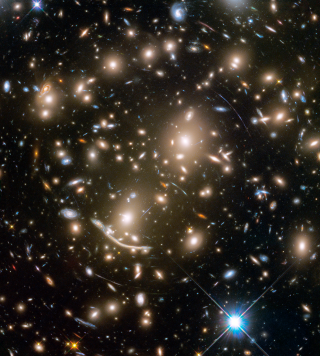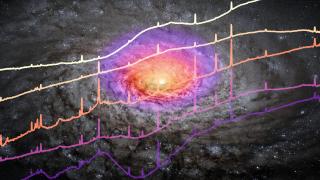Bibcode
Aguerri, J. A. L.; Méndez-Abreu, J.; Falcón-Barroso, J.; Amorin, A.; Barrera-Ballesteros, J.; Cid Fernandes, R.; García-Benito, R.; García-Lorenzo, B.; González Delgado, R. M.; Husemann, B.; Kalinova, V.; Lyubenova, M.; Marino, R. A.; Márquez, I.; Mast, D.; Pérez, E.; Sánchez, S. F.; van de Ven, G.; Walcher, C. J.; Backsmann, N.; Cortijo-Ferrero, C.; Bland-Hawthorn, J.; del Olmo, A.; Iglesias-Páramo, J.; Pérez, I.; Sánchez-Blázquez, P.; Wisotzki, L.; Ziegler, B.
Bibliographical reference
Astronomy and Astrophysics, Volume 576, id.A102, 17 pp.
Advertised on:
4
2015
Journal
Citations
116
Refereed citations
108
Description
Context. The bar pattern speed (Ωb) is defined as the
rotational frequency of the bar, and it determines the bar dynamics.
Several methods have been proposed for measuring Ωb.
The non-parametric method proposed by Tremaine & Weinberg (1984,
ApJ, 282, L5; TW) and based on stellar kinematics is the most accurate.
This method has been applied so far to 17 galaxies, most of them SB0 and
SBa types. Aims: We have applied the TW method to a new sample of
15 strong and bright barred galaxies, spanning a wide range of
morphological types from SB0 to SBbc. Combining our analysis with
previous studies, we investigate 32 barred galaxies with their pattern
speed measured by the TW method. The resulting total sample of barred
galaxies allows us to study the dependence of Ωb on
galaxy properties, such as the Hubble type. Methods: We measured
Ωb using the TW method on the stellar velocity maps
provided by the integral-field spectroscopy data from the CALIFA survey.
Integral-field data solve the problems that long-slit data present when
applying the TW method, resulting in the determination of more accurate
Ωb. In addition, we have also derived the ratio ℛ
of the corotation radius to the bar length of the galaxies. According to
this parameter, bars can be classified as fast (ℛ < 1.4) and
slow (ℛ > 1.4). Results: For all the galaxies, ℛ
is compatible within the errors with fast bars. We cannot rule out (at
95% level) the fast bar solution for any galaxy. We have not observed
any significant trend between ℛ and the galaxy morphological type.
Conclusions: Our results indicate that independent of the Hubble
type, bars have been formed and then evolve as fast rotators. This
observational result will constrain the scenarios of formation and
evolution of bars proposed by numerical simulations.
Related projects

Galaxy Evolution in Clusters of Galaxies
Galaxies in the universe can be located in different environments, some of them are isolated or in low density regions and they are usually called field galaxies. The others can be located in galaxy associations, going from loose groups to clusters or even superclusters of galaxies. One of the foremost challenges of the modern Astrophysics is to
Jairo
Méndez Abreu

Traces of Galaxy Formation: Stellar populations, Dynamics and Morphology
We are a large, diverse, and very active research group aiming to provide a comprehensive picture for the formation of galaxies in the Universe. Rooted in detailed stellar population analysis, we are constantly exploring and developing new tools and ideas to understand how galaxies came to be what we now observe.
Anna
Ferré Mateu

Nuclear Activity in Galaxies: a 3D Perspective from the Nucleus to the Outskirts
This project consists of two main research lines. First, the study of quasar-driven outflows in luminous and nearby obscured active galactic nuclei (AGN) and the impact that they have on their massive host galaxies (AGN feedback). To do so, we have been granted time with the Gran Telescopio CANARIAS (GTC) in the optical and near-infrared ranges
Cristina
Ramos Almeida